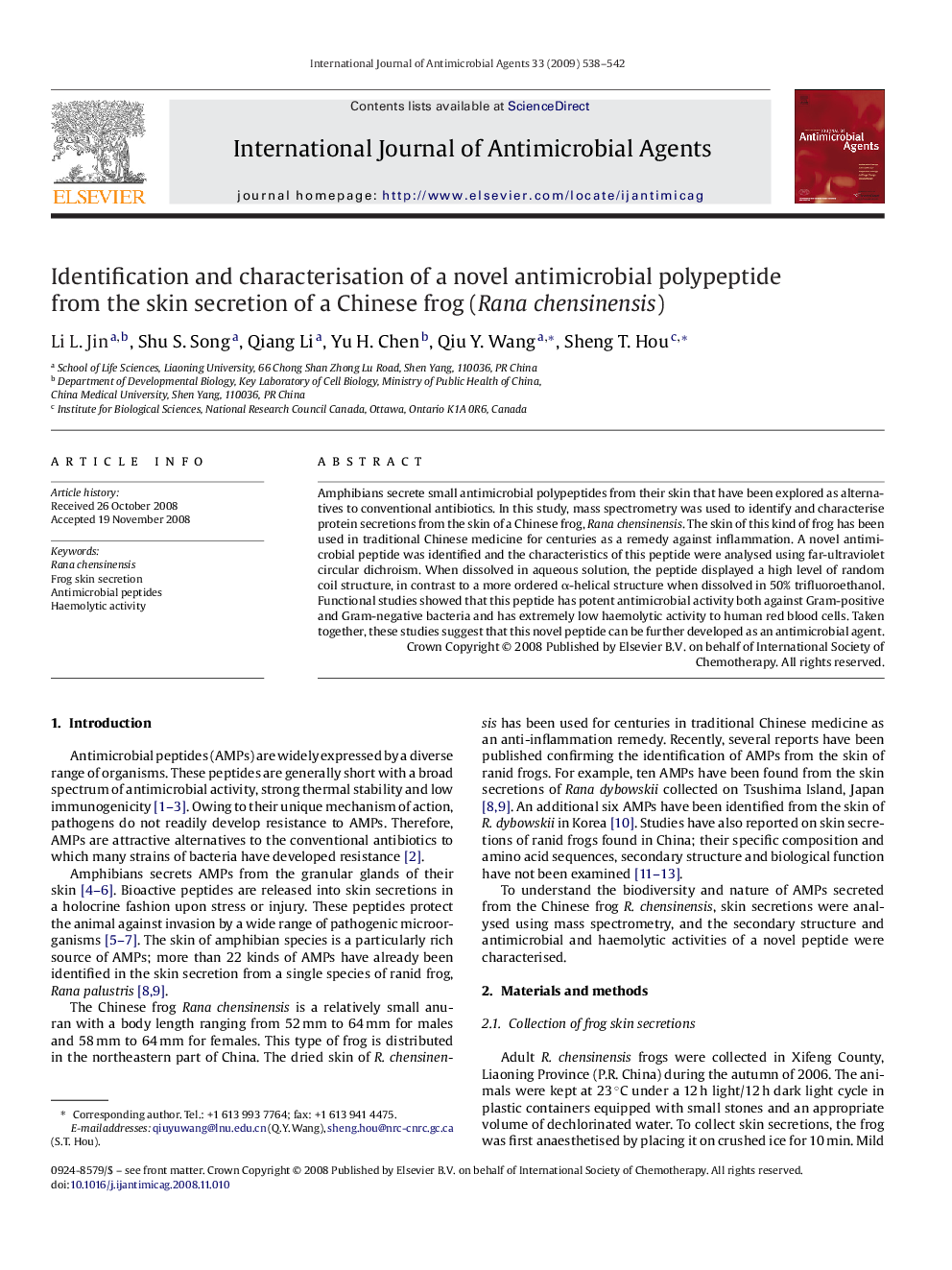| Article ID | Journal | Published Year | Pages | File Type |
|---|---|---|---|---|
| 3360121 | International Journal of Antimicrobial Agents | 2009 | 5 Pages |
Amphibians secrete small antimicrobial polypeptides from their skin that have been explored as alternatives to conventional antibiotics. In this study, mass spectrometry was used to identify and characterise protein secretions from the skin of a Chinese frog, Rana chensinensis. The skin of this kind of frog has been used in traditional Chinese medicine for centuries as a remedy against inflammation. A novel antimicrobial peptide was identified and the characteristics of this peptide were analysed using far-ultraviolet circular dichroism. When dissolved in aqueous solution, the peptide displayed a high level of random coil structure, in contrast to a more ordered α-helical structure when dissolved in 50% trifluoroethanol. Functional studies showed that this peptide has potent antimicrobial activity both against Gram-positive and Gram-negative bacteria and has extremely low haemolytic activity to human red blood cells. Taken together, these studies suggest that this novel peptide can be further developed as an antimicrobial agent.
